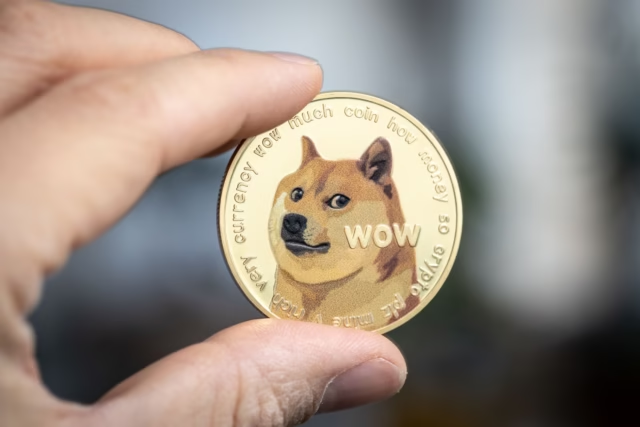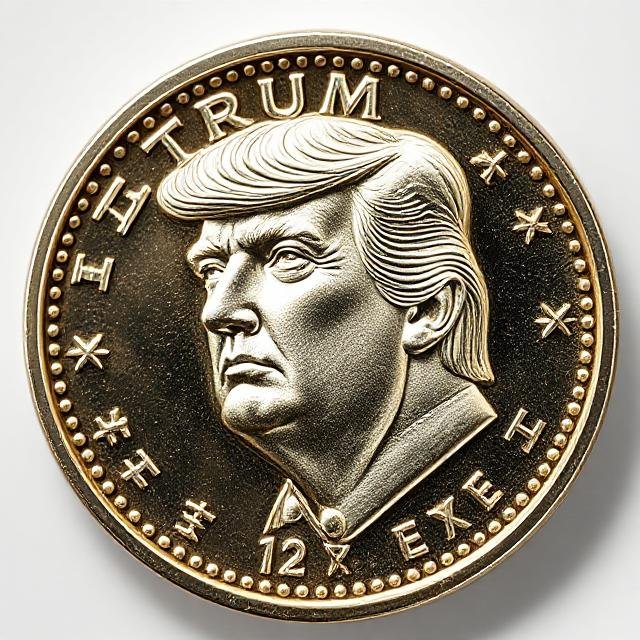Introduction
Dogecoin (DOGE) is a cryptocurrency that started as a lighthearted joke but went on to become one of the most recognizable names in the crypto world. It’s famous for its Shiba Inu dog logo, internet meme origins, and a passionate online community.
When Was Dogecoin Launched?
Dogecoin was officially launched on December 6, 2013 by two software engineers:
- Billy Markus (Oregon, USA) – a programmer who wanted to create a fun, approachable cryptocurrency.
- Introduction
Dogecoin (DOGE) is one of the most unique stories in cryptocurrency history. Originally created as a parody of Bitcoin, Dogecoin has evolved from an internet meme into a top-tier digital asset with a passionate global following. Its Shiba Inu logo, playful tone, and dedicated community have made it a cultural icon as much as a financial asset.
In this article, we’ll explore Dogecoin’s origins, why it was created, how it works, and the milestones that turned it from a joke into a household name.
The Birth of Dogecoin
Dogecoin was officially launched on December 6, 2013 by Billy Markus, a software engineer from Oregon, USA, and Jackson Palmer, a marketing professional from Sydney, Australia.
The idea began with a lighthearted tweet from Palmer, joking about creating a cryptocurrency based on the viral “Doge” meme — a Shiba Inu dog with captions in broken English like “such wow” and “very currency.”
Markus, intrigued by the idea, reached out to Palmer, and together they turned the joke into reality. They wanted to make cryptocurrency more approachable for everyday people, breaking away from Bitcoin’s image as overly technical or connected to speculation and illicit use.
Why Dogecoin Was Created
At its core, Dogecoin was built to be fun, friendly, and community-driven. Markus and Palmer envisioned a cryptocurrency that could:
Encourage tipping and microtransactions on social media.
Build community engagement through charitable causes and sponsorships.
Lower barriers to entry for newcomers to the crypto space.
The lighthearted branding made it less intimidating and helped it go viral across forums like Reddit and Twitter.
How Dogecoin Works
From a technical perspective, Dogecoin is similar to Bitcoin in that it uses blockchain technology and a Proof-of-Work (PoW) consensus mechanism. However, it has several unique traits:
Block Time: Dogecoin processes transactions every 1 minute, compared to Bitcoin’s 10 minutes.
Inflationary Supply: Unlike Bitcoin’s capped supply of 21 million coins, Dogecoin has no maximum supply. Around 5 billion new DOGE are added to circulation each year.
Mining: Dogecoin mining was merged with Litecoin in 2014, allowing miners to earn both coins simultaneously.
These factors make Dogecoin fast, inexpensive to transfer, and sustainable for ongoing use in tipping and payments.
Major Milestones in Dogecoin’s Journey
2014 – Charitable Fundraising: The Dogecoin community raised $50,000 worth of DOGE to send the Jamaican bobsled team to the Winter Olympics. They also raised funds for clean water projects in Kenya.
2015 – Departure of a Founder: Jackson Palmer stepped away from the project, expressing concerns about excessive speculation in the crypto industry.
2018–2020 – Niche Popularity: DOGE maintained a loyal following but remained primarily used for online tipping.
2021 – Mainstream Explosion: Dogecoin’s popularity skyrocketed after endorsements and memes from Elon Musk, plus attention from celebrities like Snoop Dogg and Mark Cuban. In May 2021, DOGE hit its all-time high price of $0.73.
2022–2024 – Real-World Adoption: Tesla began accepting Dogecoin for certain merchandise, and some online retailers integrated it as a payment option.
2025 – Still Among the Top Cryptos: Dogecoin remains in the top 10 by market capitalization, proving its staying power.
Cultural and Economic Impact
Dogecoin is more than just a currency — it’s a movement. It showed that digital assets don’t have to be purely about profit; they can foster community, creativity, and charitable giving.
Its meme-driven culture has influenced countless other “meme coins” like Shiba Inu (SHIB), though few have matched DOGE’s staying power or adoption. While volatility remains a factor, Dogecoin’s role in shaping the public’s perception of cryptocurrency is undeniable.
Looking Ahead
The future of Dogecoin will likely depend on:
Integration into payment systems for everyday purchases.
Technological upgrades to improve scalability and security.
Community engagement, which has been its strongest asset since day one.
With ongoing interest from both retail investors and high-profile figures, DOGE’s playful bark might continue echoing in the crypto world for years to come.
Conclusion
From a joke tweet in 2013 to a cryptocurrency with billions in market cap, Dogecoin’s story is a reminder that innovation can come from unexpected places. Whether it’s used for tipping, payments, or just for fun, Dogecoin remains one of the most remarkable — and entertaining — chapters in cryptocurrency history.
Palmer’s joke tweet inspired interest online, leading the two to team up and build a real cryptocurrency.
Why Dogecoin Was Created
At the time, Bitcoin was seen as overly technical and often associated with speculation or illicit activities. Markus and Palmer wanted to create a coin that:
- Had fun, friendly branding.
- Was accessible to beginners.
- Encouraged tipping, microtransactions, and community spirit.
They chose the Shiba Inu “Doge” meme as the mascot, instantly giving Dogecoin viral appeal.
How Dogecoin Works
- Blockchain: Like Bitcoin, Dogecoin uses blockchain technology to record transactions.
- Consensus Mechanism: It runs on a Proof-of-Work (PoW) system, but with faster block times (1 minute per block vs Bitcoin’s 10 minutes).
- Supply: Unlike Bitcoin’s capped supply of 21 million, Dogecoin has no maximum supply, which means it is inflationary — about 5 billion new DOGE are added each year.
Major Milestones
- 2014 – Dogecoin community raises funds to sponsor the Jamaican bobsled team for the Winter Olympics.
- 2015 – Jackson Palmer leaves the project, saying it became too speculative.
- 2018–2020 – Dogecoin remains a niche crypto used mainly for tipping online.
- 2021 – Dogecoin gains mainstream attention after tweets from Elon Musk, mentions by celebrities, and Reddit-fueled hype, sending its price to an all-time high of $0.73 in May 2021.
- 2022–2024 – Dogecoin becomes accepted by some major companies for payments, including Tesla for certain merchandise.
- Today – DOGE remains one of the top cryptocurrencies by market cap, supported by a loyal global community.
Cultural Impact
Dogecoin stands out for its meme culture, charitable fundraisers, and role as the “people’s crypto.” It’s often used to introduce newcomers to cryptocurrency because of its low cost per coin and friendly branding.
Conclusion
What began as an internet joke has grown into a cryptocurrency with real-world use and a dedicated following. While Dogecoin’s value can be volatile, its story proves that community and culture can be as powerful in crypto as technology itself.








[…] the way, we’ll also link to resources like Shiba Inu History and Dogecoin for readers who want a deeper […]